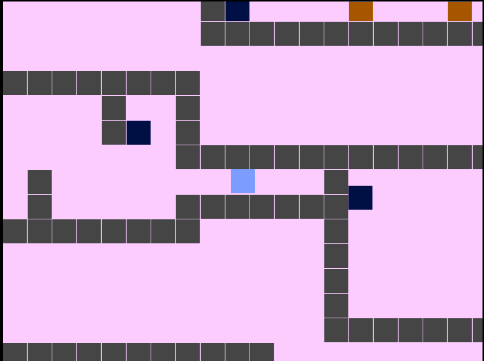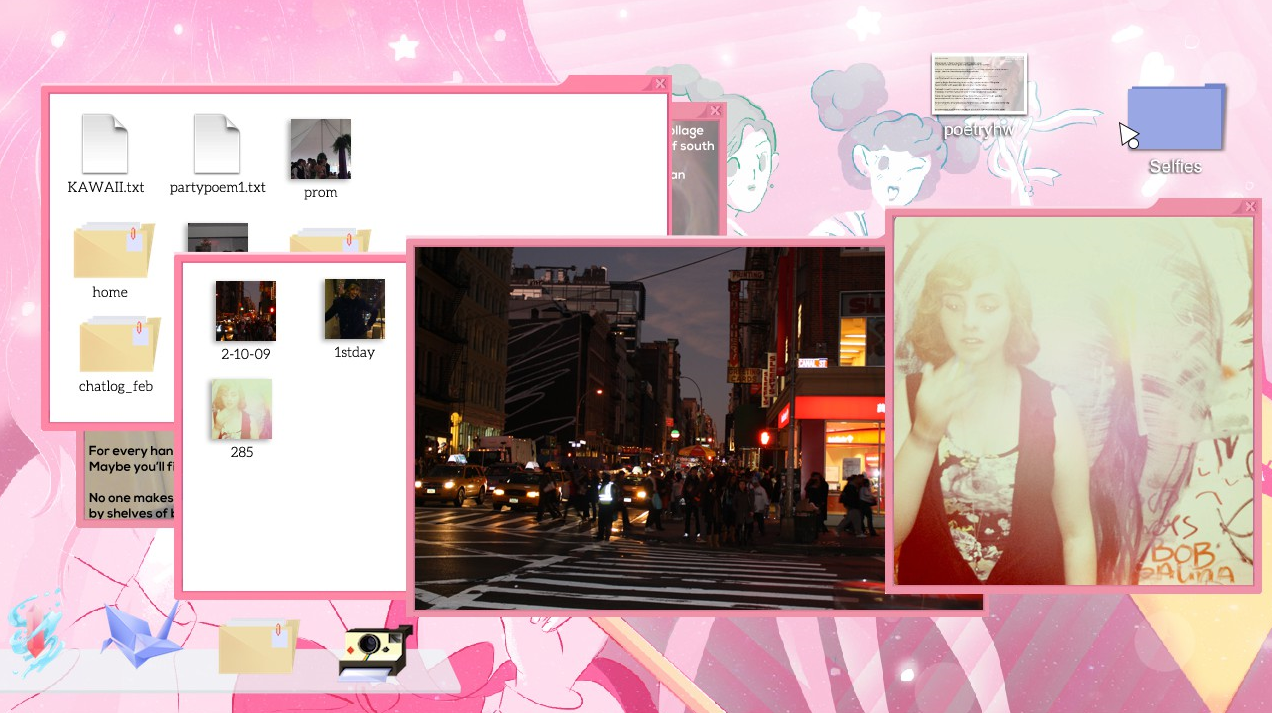How to Write a Biography on a Gamer
Can You Live A Video Game? Autobiography & Living The Author In Video Games
![]()

In my previous interviews with the queer game designer Robert Yang and the co-creator of Counter-Strike, Minh Le, a frequent theme came to sprout, one that I found common in the work of many marginalized game designers, including Brendon Chung, Jenova Chen, and Mohammed Alavi. Even as they were all racialized, marginalized, or queered, these designers had made conscious attempts to resist putting themselves (or someone of the same identity) within the video games they were making. As a writer and connoisseur of literature, this surprised me. In fiction writing, life stories sell. The most popular genre has remained the life narrative: biographies, memoirs, autobiographies, testimonials.
But in video games, historically, the life narrative has been all but invisible, hidden away, and left as Easter eggs or more generalized allegories within science fiction and fantasy narratives. A new era of indie game development is challenging the very definitions of fiction and autobiography, and what it means to tell one's story.
As Robert Yang said, "no one makes personal games," and it's not difficult to see why. First, the gaming player-base is international, so the political implications of telling "identity stories" would have totally different meanings to non-American players, and may cause the game to look provincial. American game companies have mostly sought to erase developers, crediting "a team," obscuring the notion of a singular storyteller.
Video games simply don't work with identity in the way novels and films do. Even consciously diverse games like Sleeping Dogs, Far Cry 4, and Mirror's Edge have white designers and writers at the helm. Their celebration, as I see it, is an offshoot of the instantaneous love for celebrity culture that only sees representations and not cultural forms or artists themselves.
Perhaps one of the reasons I'm so intrigued by video games as a fiction writer is that I've too resisted telling an authentic autobiographical story in my own fiction. I have had characters by my name, Kawika, appear in my stories, but always as a ruse, a sleight of hand, a signature. My stories are deeply personal, whether they are about people in bodies similar to my own or about dragons facing down magicians in an icy fantasy plane. The idea that autobiographical fiction is more personal than other stories has always seemed outrageous, a product of the way we categorize ourselves and others while expecting total transparency.
The fiction writer inside of me rails against this injunction to write myself, though as a teacher and academic I acknowledge how autobiographies — even those that are embellished, fictionalized — have been of extreme importance in minority literature, from nineteenth century slave narratives to the "talk stories" of Maxine Hong Kingston. In my creative writing course on Biography Writing, I teach how autobiography has often flown in the face of the conservatism of traditional biography writing, and I ask students to produce their own autobiographies, knowing full well that I myself would be aghast at such a writing prompt.
In an age of digital transparency, big data-gathering and selfie-politics, wouldn't we be relieved that there is this new art form, video games, that successfully killed the author?
However, in the current peak of indie game development, beginning with Braid in 2008, solo designers now have almost complete control of a game's production. They are creating games that overlap with literary genres of autobiography and testimonial. Life writing games or "personal games" are broken into two types: games about sexual and queer experiences, games like Dys4ia, Lim, Mainichi, and Coming Out Simulator 2014; and games about mental health, games like Cibele, That Dragon, Cancer, Beneath Floes, and Depression Quest. All of these games are inescapably focused on the body — how it moves, how it's perceived, its limitations, and how the player can empathize with this because they too are employing their body through rapid button patterns, muscle memory, and hunched-over postures.
Personal games have radically different outcomes than literary or film biographies. I found myself stressed, hurt, aggravated, saddened, through the act of play. I didn't get much of a sense of the identities of the developers or writers, or what was at stake or being broadcast about the identities they were writing. They made me feel a different kind of empathy, one not welded to a subset of peoples, but one rooted in the anger and loathing I, too, feel for the systems and standards all around us.

Anna Anthropy, also known as Auntie Pixelant, developed the 2012 game Dys4ia to tell her story about experiences with hormone therapy and gender dysphoria. The game's narrative is dependent on multiple mini-games that put her struggles into a playable form, while the actual protagonist (Anna Anthropy) is blurred into pixelated profile, so that this extremely personal story never really effects us with the intimacy we might expect from other media.
Instead, we focus on what Anna Anthropy, herself, calls the empathy that comes from frustration, something you can't get from a novel or film because it includes constant repetition and failure. As Anthropy has said in an interview, frustration unlocks "an entirely different level of empathy that most people simply cannot comprehend, and so the game makes this particular empathetic frustration available for all to experience."

In my class, I compare Anthropy's Dys4ia with merritt k's game Lim (2013) and Mattie Brice's Mainichi. Lim allows the user to "experience the violence of blending in." The abstract figures found in Anthropy's game are even more ethereal in merrit k's Lim, in which multi-colored blocks replace people. The player plays as a block, who will be violently bullied by other blocks unless they try to "blend" (using the "z" key).
But blending comes with its own surreal discomfort, even as the body is abstracted into a mere rectangle — a thundering heartbeat, the game's camera slowly zooming in to limit the player's perception, a shaky and uncertain screen. This captures the nervousness, the aggravation, the frustration of "blending," which is a very real terror and frustration experienced with so many -isms. Mainichi (Japanese for "everyday") also forces frustration onto the player by having them repeat the same coffee meeting day after day, with nuanced differences in how the protagonist performs and dresses — communicating the daily occurrences in the real life of developer Mattie Brice.

The 2015 game Cibele is about a romance that develops from a massive online game, but is ultimately about depression. The game's designer, Nina Freeman, based the game upon her own experiences playing games, and a lover who she met though online games, but who ended up distant and unstable. Freeman's first released game, How Do You Do It was also autobiographical, and dealt with her discovering her own sexuality after viewing the film Titanic, and then enacting sexual pleasure through her Barbie Dolls (to figure out "how you do it").
Cibele's story involves losing her virginity to her online boyfriend, a man who she can only know through his online persona. Her desire for his companionship contrasts the loneliness she feels in her reliance on technology. Freeman fits the profile of many woman gamers — unaccepted and isolated in much of game culture, which sees women as non-gamers or as fakes. Through her own voice acting Freeman speaks of her low self-esteem, and her love for anime. Because games so rarely take this personal route, much of the game feels voyeuristic, but it also forces the reader to take on Freeman herself as their own avatar. When the player selects "reply," they speak Freeman's words, not their own.

Like Cibele, That Dragon, Cancer similarly works in abstraction, even as its subject is more tragic. The game is based on the designers' (Ryan and Amy Green's) experience of seeing their son Joel diagnosed with terminal cancer at one year old. Like Cibele, the game does not rely on open narration or on details of the characters' lives. Where and when this all happens is hardly dealt with. The game begins with background conversation that seems like a real interaction between the parents with the child.
The player controls a duck, one of the child's toys, with an abstract, faceless child kneeling on the shore. The game moves forward in this abstraction, relying more on the player's movement through this imagined world: through the swing sets, the bathtubs, the doctor's offices, the playpens. We are never informed about the characters' life stories through exposition. Instead, the game lets the player play the experience: as Joel's rubber ducky, as Joel driving a colorful racing car through his bloodtests, as Joel's father who must literally swim through his immense depression and guilt.
All of these games speak to me as a fiction writer who writes personal, but not autobiographical stories, who, too, likes to blur identities into faceless pixels, but still tell about real experiences that deeply affected me.
These "personal games" for me do not signal a turn to autobiography so much as they push the boundaries of what personal writing is. All of these games rely more on impression than literal realism. Characters are abstracted, with little information given to the player about their backgrounds, their families, or where they live — virtually none of the biography is within these autobiographies. Instead, life stories are told through interaction, so that players experience the moods, the emotions, the swings, and the frustrations of others.
How to Write a Biography on a Gamer
Source: https://medium.com/anomalyblog/playing-the-author-video-game-autobiographies-46367939c70a
0 Response to "How to Write a Biography on a Gamer"
Post a Comment